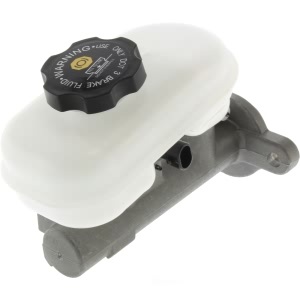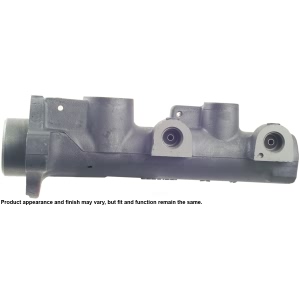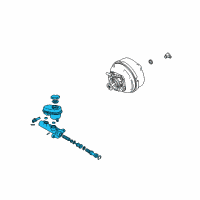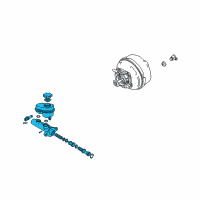< Back ×
2007 Cadillac CTS Brake Master Cylinder
My Vehicle Change Vehicle
2007 Cadillac CTS
< Back to View All
Brake Boosters & Brake Master Cylinders
- Department
- Series
- Brands
- Prices

 Product Specifications
Product Specifications- Notes: Brembo Calipers
- UPC: 805890243731
- Part Description: 2007 Cadillac CTS Premium™ Brake Master Cylinder
Vehicle Fitment- 2007 Cadillac CTS | Base | All Engines
- 2007 Cadillac CTS | V | All Engines

 Product Specifications
Product Specifications- Notes: Supplied w/o Reservoir
- Bore Diameter (N): 1.00"
- E-Waste: No
- Installation Hardware Included: No
- Master Cylinder Color/Finish: Gray
- Master Cylinder Material: Aluminum
- Mounting Hole Quantity: 2
- Package Contents: Master Cylinder, Reservoir Pin Kit
- Port Quantity: 2
- Primary Port Size: 1/2 x 20
- Product Condition: Remanufactured
- Reservoir Included: No
- Secondary Port Size: 1/2 x 20
- UPC: 082617693455
- Part Description: 2007 Cadillac CTS Remanufactured Master Cylinder
Vehicle Fitment- 2007 Cadillac CTS | All Trims | All Engines
- Product Specifications
- Notes: Cts; W/Cts-V
- Other Names: Master Cylinder
- Item Dimensions: 10.4 x 8.8 x 8.6 inches
- Item Weight: 1.30 Pounds
- Fitment Type: Direct Replacement
- Part Description: 2007 Cadillac CTS Cylinder Asm-Clutch Master
Vehicle Fitment- 2007 Cadillac CTS | V | 8 Cyl 5.7 L GAS, 8 Cyl 6.0 L GAS
- Product Specifications
- Other Names: Master Cylinder
- Item Dimensions: 8.2 x 6.1 x 12.5 inches
- Item Weight: 2.20 Pounds
- Part Description: 2007 Cadillac CTS Cylinder, Brake Master
Vehicle Fitment- 2007 Cadillac CTS | Base, V | 6 Cyl 2.8 L GAS, 6 Cyl 3.6 L GAS, 8 Cyl 6.0 L GAS
- Product Specifications
- Notes: Cts; W/O Cts-V
- Other Names: Master Cylinder
- Item Dimensions: 8.2 x 8.3 x 10.5 inches
- Item Weight: 2.20 Pounds
- Fitment Type: Direct Replacement
- Replaces: 12575464
- Part Description: 2007 Cadillac CTS Actuator Asm-Clutch
Vehicle Fitment- 2007 Cadillac CTS | Base | 6 Cyl 2.8 L GAS, 6 Cyl 3.2 L GAS, 6 Cyl 3.6 L GAS
- Product Specifications
- Notes: Cts; W/Cts-V
- Other Names: Master Cylinder
- Item Dimensions: 12.4 x 8.1 x 6.4 inches
- Item Weight: 1.80 Pounds
- Part Description: 2007 Cadillac CTS Cylinder Asm-Brake Master
Vehicle Fitment- 2007 Cadillac CTS | V | 8 Cyl 5.7 L GAS, 8 Cyl 6.0 L GAS
FAQ for Brake Master Cylinder Repair
Q: What is the proper way to install the Master Cylinder Reservoir?
A:
Install the reservoir onto the master cylinder, fill the reservoir, and install the brake fluid level sensor and the cylinder to the vehicle.
By Bob
GM Specialist
01/11/2022Q: What is the proper way for filling the Master Cylinder Reservoir?
A:
Firstly, visually inspect the brake fluid level to check the function of the brake system, and then if brake system service was just completed, the brake fluid may be topped-off up to the maximum-fill level. If the brake fluid level is above the half-full point, adding brake fluid is not recommended under normal conditions.
By Bob
GM Specialist
01/11/2022Q: What is the proper way to install the Master Cylinder?
A:
Bench bleed the cylinder, install the cylinder to the vacuum brake booster and the brake pipes to the cylinder, and connect the electrical connector.
By Bob
GM Specialist
01/11/2022Q: What should be noticed while servicing the Master Cylinder Bench Bleeding?
A:
When adding fluid to the brake master cylinder reservoir, use only Delco Supreme 11(R), GM P/N 12377967 (Canadian P/N 992667), or equivalent DOT-3 brake fluid from a clean, sealed brake fluid container.
By Bob
GM Specialist
01/11/2022Q: What should be noticed during the Assembly procedure?
A:
Do not use abrasives to clean the brake master cylinder bore.
By Bob
GM Specialist
01/11/2022Q: Under what conditions should the affected components be replaced?
A:
There are cuts, cracks, nicks, or deformation in the reservoir cap and diaphragm.
By Bob
GM Specialist
01/11/2022Q: What is the proper way to remove the Master Cylinder?
A:
Disconnect the electrical connector and the brake pipes, Plug the open brake pipe fitting ends and Remove the master cylinder.
By Bob
GM Specialist
01/11/2022Q: What should be removed to get access to the Master Cylinder Reservoir?
A:
Remove the master cylinder and the fluid level sensor.
By Bob
GM Specialist
01/11/2022See more FAQs (3)



